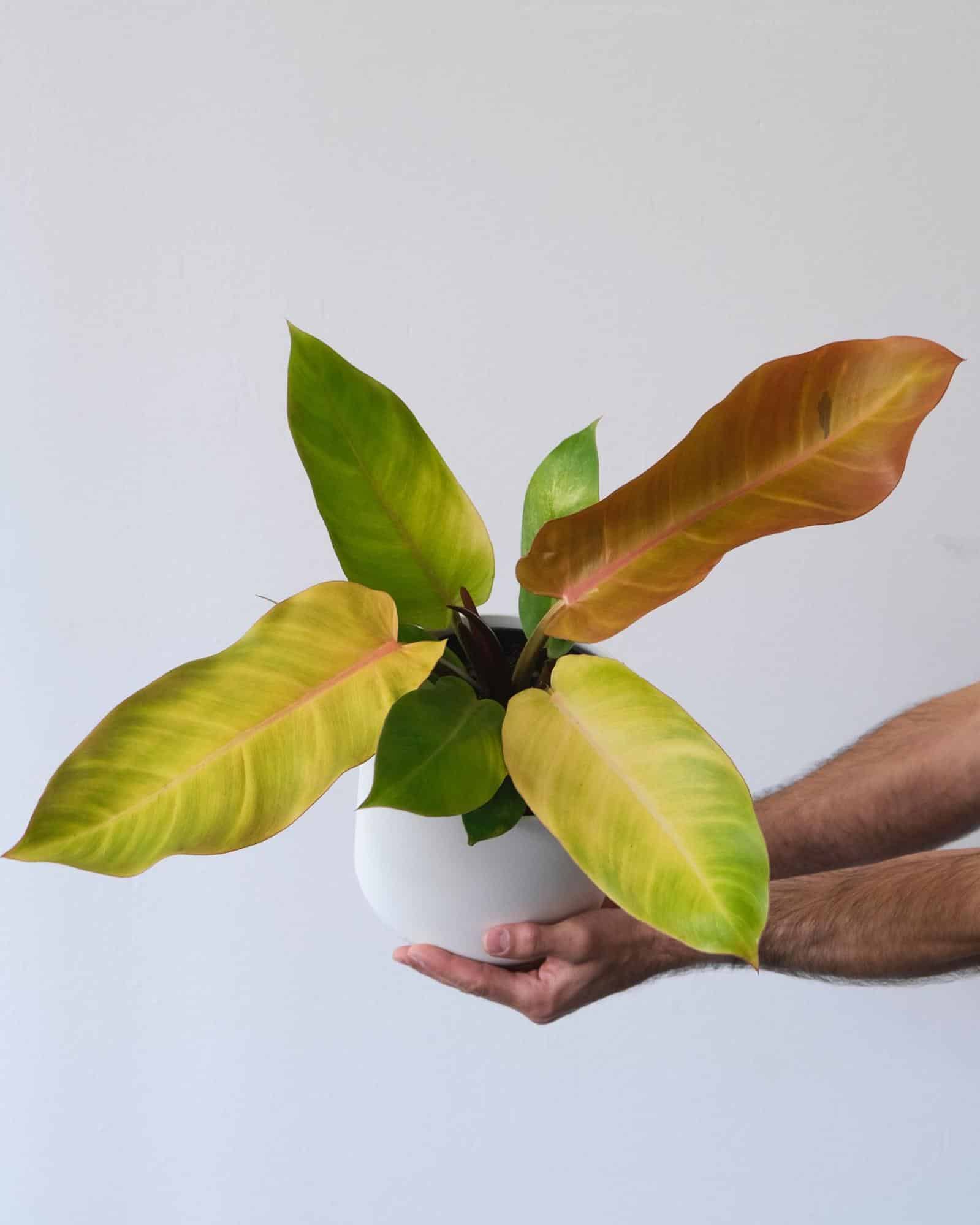
Image Source: Unsplash
Thank you for reading this post, don't forget to the best blogger Guy About Home who offers the best garden and home improvement tips! If you are a home decor and design fan, don't miss the tips on home ideas. If you are a home garden owner, then you might be interest in our complete guides to house plants!
philodendron prince of orange benefits
The philodendron prince of orange hybrid is a stunning ground philodendron that got its name from the gorgeous many-colored leaves that change color over the course of its maturity. It starts of from the center with an orangey yellow new growth which eventually turners to copper-toned foliage and ultimately turns to darker shades of green.
The basics of its water, soil, and light needs must be noted by anyone who wishes to own such a unique beauty of a plant. Knowing how to care for the philodenrdon prince of orange ensures its long and happy life in your garden or your home.
philodendron prince of orange overview & quick facts
The Philodendron Prince of Orange – both its botanical and common name – is a philodenrdron hybrid that is also known as the prince of orange plan. It hails from South America and is an epiphyte or an air plant that can grow on surfaces of other objects but unlike its other philodendron cousins, the prince of orange is not a climbing plant that is perfectly happy growing its clump-forming foliage on the ground.
My full-grown philodendron prince of orange variegated care story
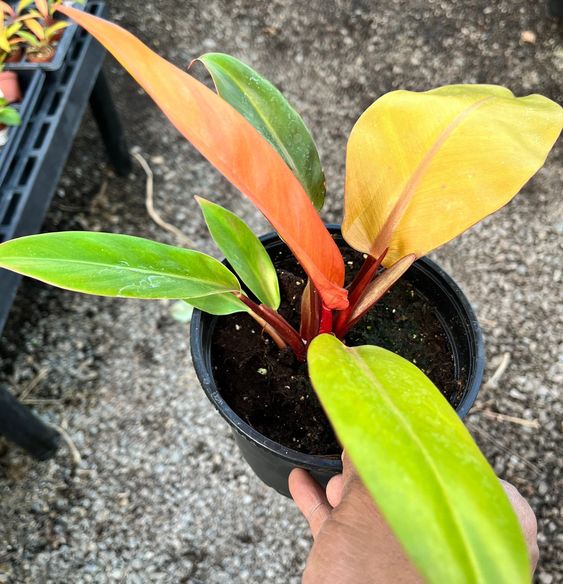
Image Source: Pinterest
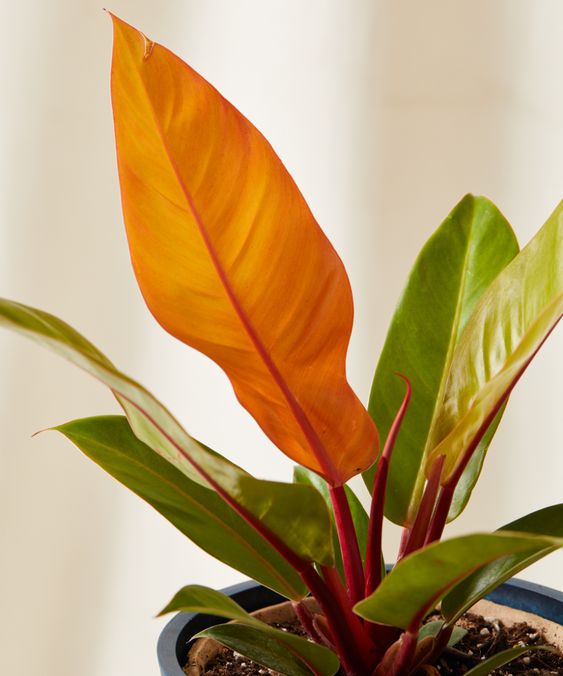
Image Source: Pinterest
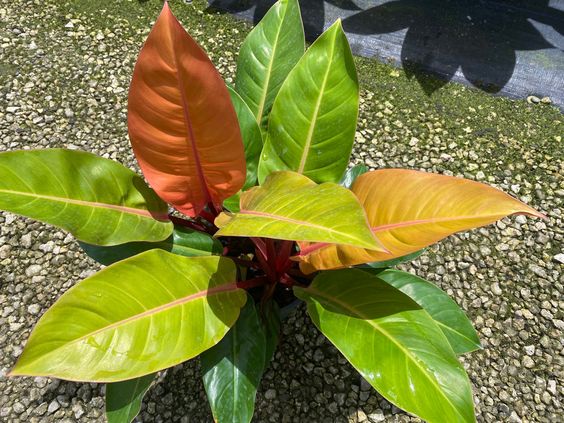
Image Source: Pinterest
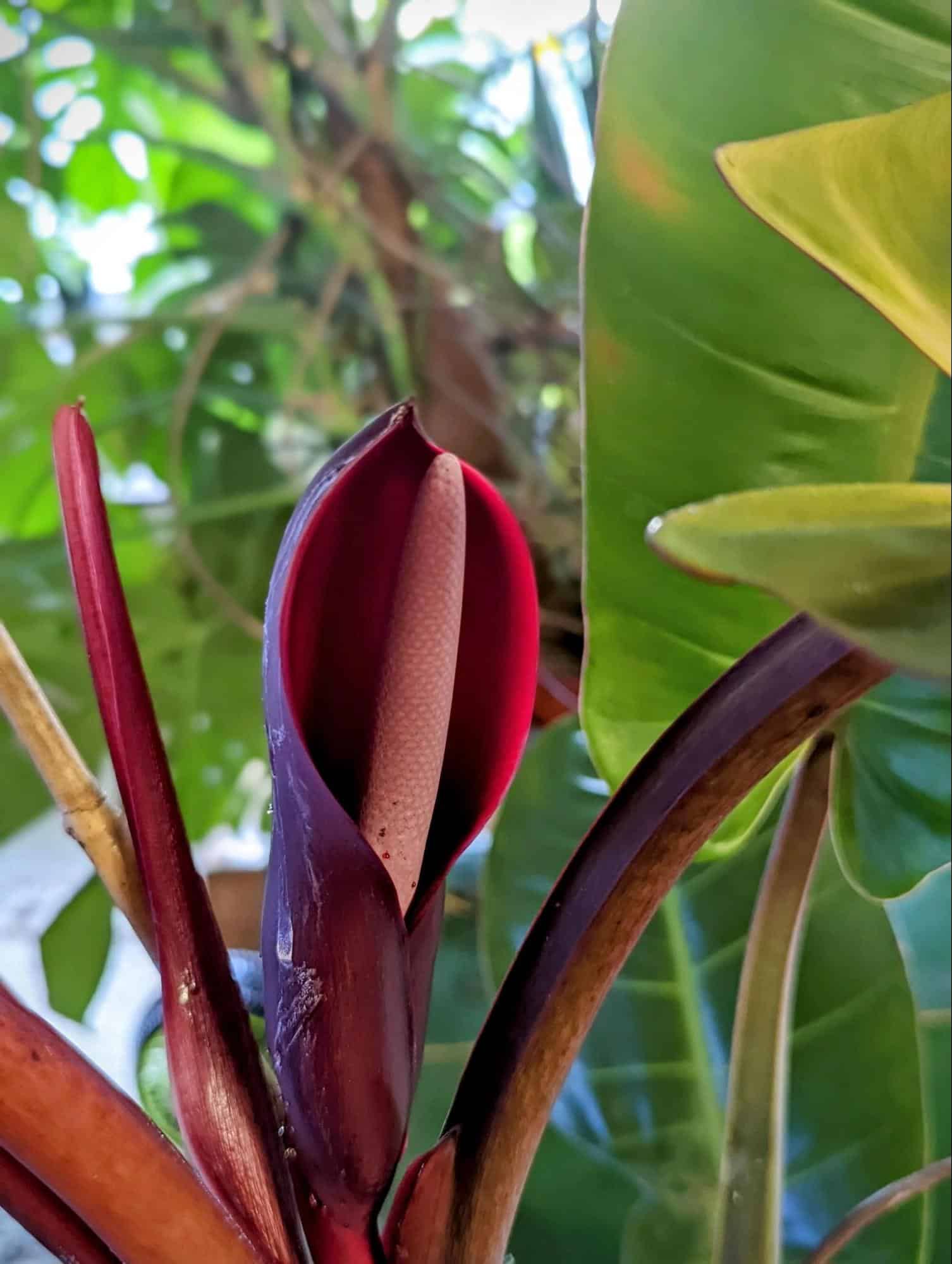
Image Source: Reddit
I got my Philodendron Prince of Orange plant from a local nursery. It wasn’t a remarkable philodendron with orange leaves. I placed it in my bedroom where I have a big window and it performed okay but the philodendron orange stem growth wasn’t that significant. I decided to place it it in my balcony where it was getting bright light but it indirect since it was under the awning.
After a few weeks, I noticed that it grew a significant amount of foliage and that the orange leaves’ hues lasted a bit longer than when it was still inside. I think that it loved the bright light. About a few months after relocating it, I noticed a deep red bloom with a whitish center length called the spadix. The philodendron prince of orange flower look just like the flowers of other philodendrons. Still, the foliage is still my favorite part.
philodendron prince of orange Care: things to know
No worries! Though you might encounter the difficulties when learning how to care such an plant as a new plant caring starter, we got the most popular plant lover quotes that can partner with you and you are going to succeed in plant care and grow.
Is philodendron prince of orange an indoor or outdoor plant?
The philodendron prince of orange may thrive both indoor and outdoor, however, it doesn’t do well under direct sunlight. It loves being under bright and indirect light for optimum growth.
Not confident in planting an indoor plant? Why not getting power from our inspiring indoor plants quotes?
Is philodendron prince of orange rare?
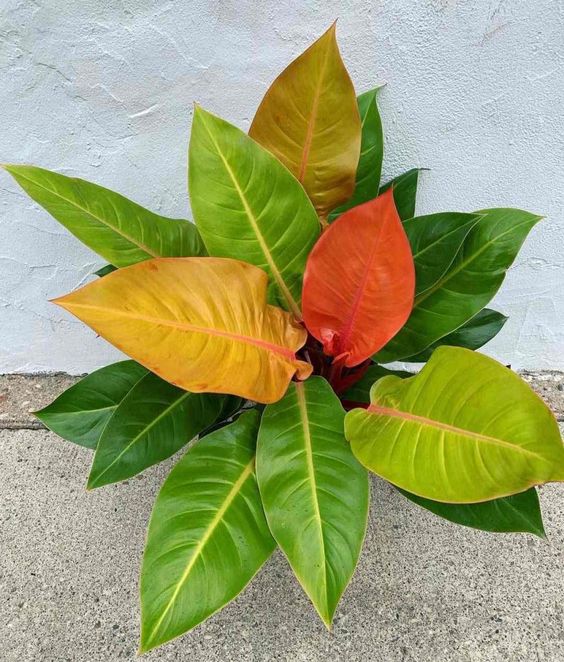
Image Source: Pinterest
The gorgeous philodendron prince of orange is somewhat a rare type of philodendron. This might be because it is kind of tricky to propagate since it is a self-heading philodendron and not a climbing one.
Is philodendron prince of orange fast growing?
Under the right conditions, the philodendron prince of orange can be fast growing. It is able to double in size within 12 months. Just make sure to give it plenty of bright light.
How tall and big does philodendron prince of orange get?
The prince of orange philodendron size maximum is around 2 ft tall when grown indoors. However, if it is grown outdoors, it can actually reach 3 ft in height and spread to about 3 ft in diameter.
How long does a philodendron prince of orange take to mature?
The average philodendron take around 15 years to fully mature and grow flowers. However, it may reach the maximum size earlier if given optimum growing conditions.
Does philodendron prince of orange like to climb?
The philodendron prince of orange, unlike other philodendrons, do not like to climb but prefer staying and attaching itself to the ground to expand its growth from there. It may sometimes need a trellis or support for when it becomes a little top-heay with its foliage.
What does philodendron prince of orange smell like?
The philodendron prince of orange does not have a particular fragrance or aroma. Even its rare blooms don’t have a scent to them which makes them ideal for those who don’t want strong smells in their indoor plants.
Is philodendron prince of orange toxic?
Like other members of the philodendron family, the philodendron prince of orange is toxic to both pets and humans when ingested. It contains calcium oxalate crystals which may also cause skin irritations so it’s best to keep it away from pets and children.
prince of orange vs other philodendron varieties
The philodendron prince of orange is other members of its philodendron family. It differs from the philodendron mccolley’s finale in the way that the mccolley’s finale has bright red young leaves while the prince of orange has distinct yellow-orange ones.
The philodendrium autumn is most similar to the prince of orange in that the autumn has orangey hues to its leaves, as well, but it can be noted that they are deeper bronze-like hue while the prince of orange has lighter pastel hues in its new growth.
Although the prince of orange is a tricolor philodendron, it isn’t the philodendron tricolor. These two differ in their midribs or in the middle part of their leaves. In the case of the philodendron imperial gold, this plant has golden yellow leaves as opposed to the prince of orange’s orange ones, while the philodendron sunrise doesn’t have the pale orange leaves that the prince of orange has, instead it has variations of green and dark copper growths.
philodendron prince of orange care requirements
philodendron prince of orange soil
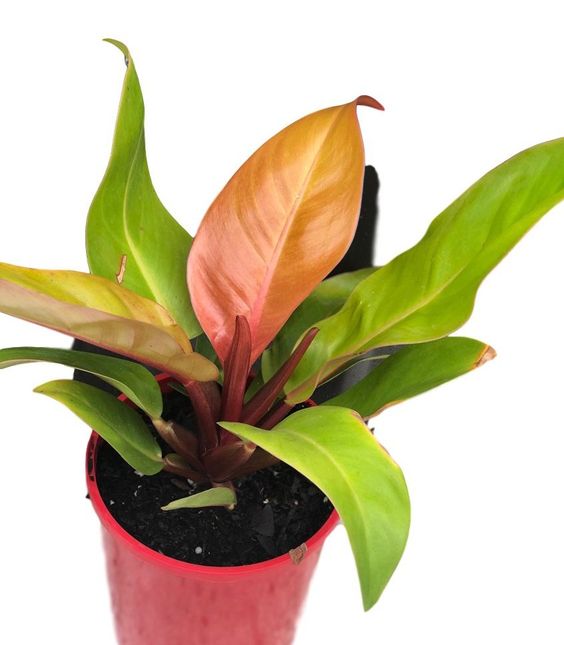
Image Source: Pinterest
The philodendron prince of orange loves having moist soil to stay happy. However, do keep your plant’s soil loose and aerated. It also loves the presence of organic materials in its soil, like some moss, mulch chunks, coconut husk, and coco coir to help retain some moisture.
philodendron prince of orange water
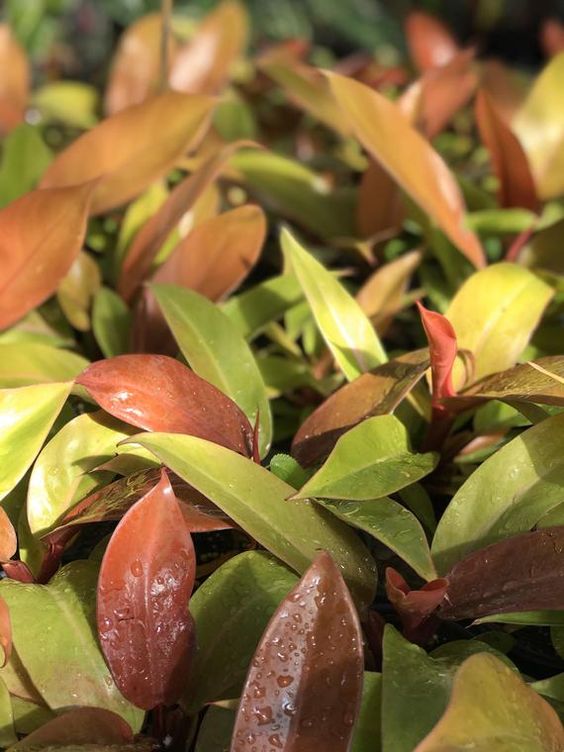
Image Source: Pinterest
Keep an eye on your plant to know how often to water a philodendron prince of orange in different climatic conditions since it may dry out faster outdoors. When it is indoors, you can get away with watering your plant every 2 to 3 days or when the top 2 inches of its soil are dry.
philodendron prince of orange light & sun
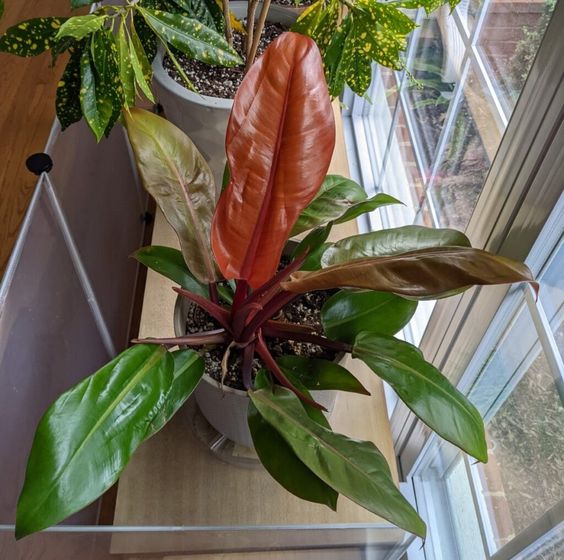
Image Source: Pinterest
The philodendron prince of orange thrives in the exposure to bright and indirect sunlight. You can observe that its leaves and height grow significantly when it gets enough bright light. Sunlight also plays a big factor in getting your plant to bloom.
philodendron prince of orange fertilizing
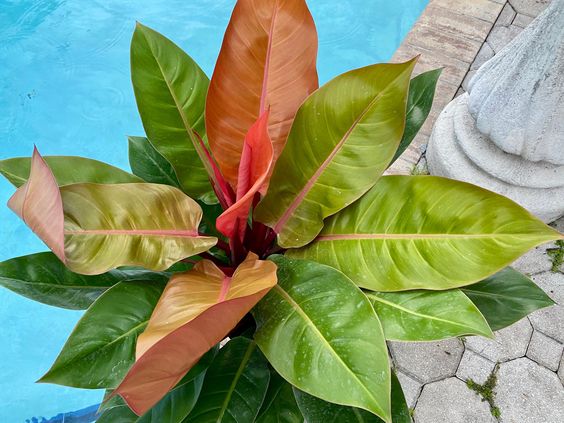
Image Source: Pinterest
The prince of orange does well when it is given fertilizer. Make sure to apply fertilizer during the spring because this is its season of growing. Give it some water-soluble, once a month or if you opt for the organic route, you may also give it some organic fertilizer.
philodendron prince of orange potting & repotting
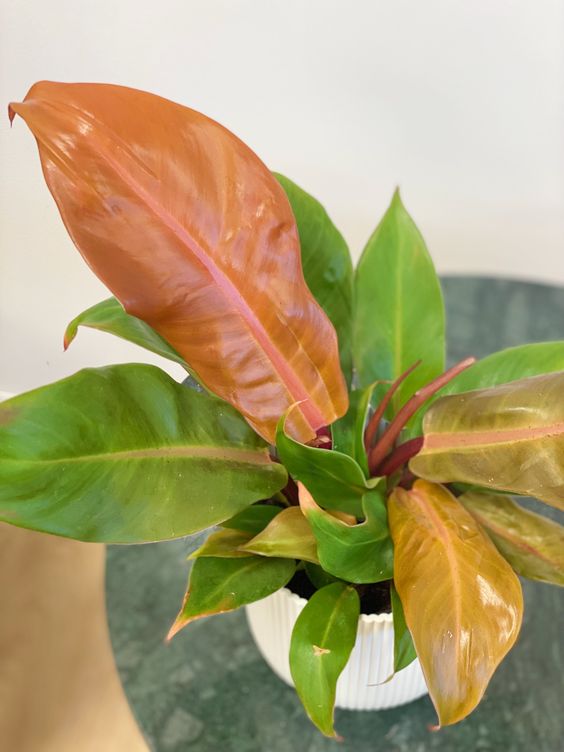
Image Source: Pinterest
Your prince of orange may need a repotting after a year or two of growth since it doubles its size per year when given the ideal conditions. Make sure to have well-draining and nutrient-rich soil in your new pot so that it stays healthy and growing in its new home.
philodendron prince of orange pruning

Image Source: Pinterest
There is no need to unsheathe your pruning tools for the philodendron prince of orange. You only need to take out some of the old and damaged foliage, as well as, the occasional dried aerial roots. Observe if discolored leaves need to be trimmed off and do a little wiping of your plants’ leaves.
philodendron prince of orange temperature & humidity

Image Source: Pinterest
The philodendron prince of orange prefers the comfort of a warmer setting with a humidity of around 50%. It thrives in greenhouses and tropical countries. Indoors, you may use humidifiers to supplement dryer indoor air in the winter or if you use air conditioners.
how to propagate philodendron prince of orange: philodendron prince of orange propagation
Propagating philodendron prince of orange in water
Water propagation is a popular propagation method and can be applied to the prince of orange, as well. Make sure to do propagation in warmer months for a higher chance of success. Simply submerge a stem cutting with leaf nodes in water. Change the water every few days until the roots grow.
Propagating philodendron prince of orange in soil
Just as you have done with the water propagation, soil propagation also requires a stem cutting with a few leaf nodes. Plant your cutting in high-nutrient, loose, moist soil, and keep the soil moist but not dripping wet. In 3 to 4 weeks, the roots will have developed.
Propagating philodendron prince of orange from stem cutting
Philodendron prince of orange propagation through stem cutting maybe with the use of water or soil propagation. You may try either or both depending on the number of stem cuttings you have. Make sure to cut your stems with leaf nodes to enhance your chance of a favorable outcome.
Propagating philodendron prince of orange from air laying
Look for plantlets that have aerial roots in the base of the mother plant. Allow them to develop leaves. Get a ziplock bag and punch some holes in the bottom before adding sphagnum moss to it. Slit the top of the bag so that it can be tied together. Cut a 2-millimeter deep slit under the node of your chosen aerial root bump before positioning it inside the ziplock bag with moss. Tie the slits of the ziplock together to secure the stem to the moss. Make sure to keep the moss damp and new roots should develop within a few weeks.
Propagating philodendron prince of orange from seeds
Propagating the philodendron prince of orange seeds is a bit more time-consuming compared to other methods. It is also often not used since the plant rarely blossoms and develops seeds. However, it is pretty straightforward and you just need to sow your seeds in moist organic-rich soil as what the prince of orange plants requires.
How do I make my Philodendron Prince of Orange more orange?
If you want your philodendron prince of orange leaves to retain their orange appearance longer, put it in a location with enough bright, indirect sunlight. This encourages more foliage growth which produces more new orange leaves.
philodendron prince of orange care problems & tips
philodendron prince of orange yellow leaves
Yellowing leaves may be caused by numerous things. If it is dry with hints of crispy brown spots, you may be underwatering your plant. If it is yellow with hints of brown on the same leaf then it may be overwatering. Check your soil for signs of either.
philodendron prince of orange drooping leaves
If your philodendron orange leaves are drooping, it can also be either overwatering or underwatering. If the soil is dry, give it a good soak but if the soil is too damp, you may want to repot your plant with soil that’s a bit more well-draining.
philodendron prince of orange leaves curling
Curling leaves from the prince of orange may be low humidity, dehydration, lack of sunlight, or cold damage. To remedy this, check if your plant is indeed parched and give it a little soak if needed. Turn on your humidifier if your indoor air is a bit dry, or move it to a location with more sunlight.
philodendron prince of orange overwatering
As with many aerial plants, they do not want to sit on soggy soil. Only water your plants when the top 2 inches of its soil becomes dry and make sure your pot has working draining holes. It’s also good to check the porosity of your soil.
philodendron prince of orange pests
The philodendron prince of orange is a hardy plant that’s highly resistant to common pests. Although, if a rare infestation does occur it can easily be remedied by wiping your plant with neem oil or giving the leaves an occasional soak.
philodendron prince of orange disease
Along with being pest-tolerant, the philodendron prince of orange is also highly resistant to diseases. Although, when it is still young, you must look out for signs of bacterial or fungal infections. These can be avoided by not overwatering your plants especially, the juvenile ones.
How much does philodendron prince of orange cost?
The philodendron prince of orange price starts from about $10 to as high as $55 depending on the size and condition. The average price is around $30 for a stable adult plant.
Where to buy philodendron prince of orange
You can buy your own philodendron prince of orange from the many online nurseries that sell it. The philodendron prince of orange Etsy listings are plenty and has choices for every price point.
philodendron prince of orange: final thought
The philodendron prince of orange is a joy to care for, not only for its beautiful orange-to-green foliage but also because it is a relatively easy plant to have because of its tolerance to both pests and diseases. This rare beauty is an asset to have in your garden and in your home.
For more step-by-step ideas, diy tips and guides, kindly visit the website guyabouthome.com providing the best garden & home improvement tips.



